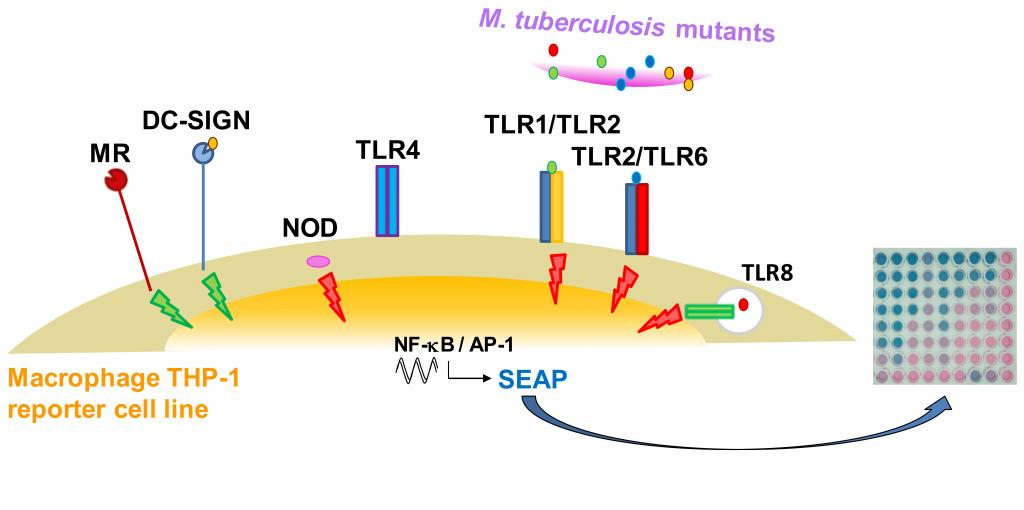- Molecular bases of M. tuberculosis recognition by PRRs (TLR2, DC-SIGN, Mincle, Dectin-1, Dectin-2), identification and structural characterization of M. tuberculosis ligands (PAMPs).
- Molecular mechanisms used by Mtb to inhibit innate immune responses.
- Rational design of synthetic analogs of mycobacterial immunomodulatory molecules with the objective of developing adjuvants or anti-inflammatory agents: mode of action and therapeutic potency.
- Autophagy modulation by mycobacterial lipids.
- M. tuberculosis lipid trafficking within extracellular vesicles and remodeling of M. tuberculosis lipidome during infection.


